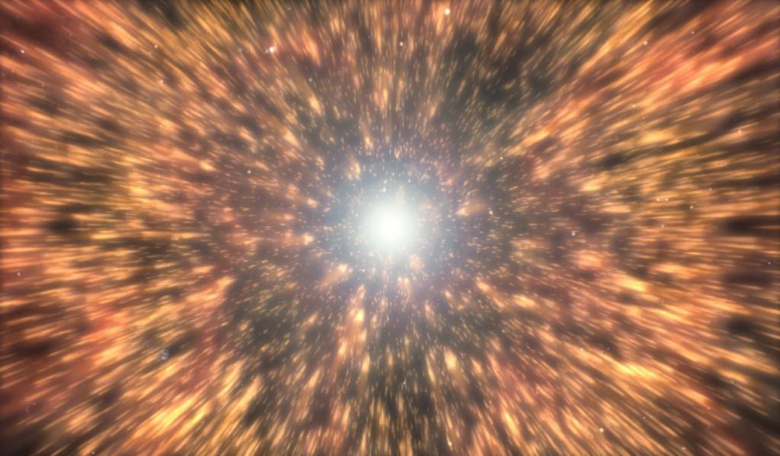Researchers investigating the intriguing features of an extremely energetic supernova explosion that was detected last year, suggest that a Quark-Nova (QN) was responsible for the supernova peaking in brightness a few days later.
Supernova explosions occur when a star of a certain mass explodes with such force that they radiate more energy in a few seconds than our Sun will in its entire lifetime and they are basically divided into two types; Type I or Type II. A Type I explosion involves the accretion of matter onto a companion star and as the matter reaches a critical limit, it ignites a series of runaway nuclear reactions. Type II supernovas occur when a star runs out of nuclear fuel and it collapses under its own gravity.
What is left after a star has gone supernova is the smallest and densest star known to exist – a neutron star. So how does this tie in with a Quark-Nova? A quark-nova is a hypothetical violent explosion resulting from the conversion of a neutron star core to quark matter through a process known as quark deconfinement. When this phase transition in a neutron star occurs, the result is a star made entirely of quarks and it becomes a quark star.
It is said that a quark-novae might explain a number of astrophysical phenomena from gamma ray bursts through to super-luminous supernovae and a team from the University of Calgary in Canada are now suggesting that a quark-nova was responsible for the curious features of ASASSN-15lh, a supernova that was spotted by the All Sky Automated Survey for Supernovae (ASASSN) in the southern constellation Indus.
The research paper, whose lead author is Rachid Ouyed, states that the star that went supernova started life as a Wolf Rayet (WO) star – a type of massive star that was stripped of hydrogen and helium prior to the supernova explosion. The team state that a few days, well, around eight and half days after the explosion, a Quark-Nova reignited material leftover from the first explosion, resulting in ASASSN-15lh becoming temporarily bright again.
This second brightening results from the late and slower contribution of the denser inner region, i.e. the core, which was initially energised by the QN shock. The heated core effectively acts as a “hot plate” keeping the region insulated until it is revealed by the receding photosphere of the QN-shocked envelope.
The team also suggest that the models they produced to explain why this double light-curve was observed for ASASSN-15lh can be applied “to any progenitor star (O-stars, luminous blue variables, Wolf-Rayet stars, etc.) if it is massive enough to go supernova and form a heavy neutron star but not too massive to go directly to a black hole.”
Quark Nova may also be the answer to other unexplained observations such as titanium enriched supernovae and the processing of elements heavier than iron, as it is suggested that supernova alone cannot produce the heavy element abundance seen in the Sun for example. Those researching the field of Quark Nova are therefore eager for more detailed investigations into different Quark-Nova scenarios.
For more information on this research, see: https://arxiv.org/pdf/1611.03657.pdf











